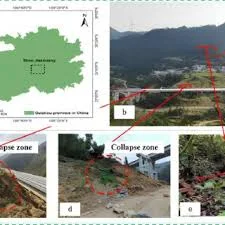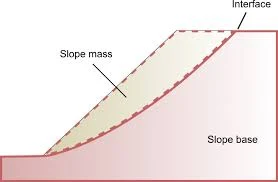Definition: Bridge scour is the engineering term for the erosion of soil (sediment like sand, gravel) around a bridge's foundation, specifically piers and abutments. It's essentially the process of fast-moving water washing away the material supporting the bridge. This creates scour holes that can severely weaken the bridge's structural integrity and lead to collapse.
Click the Translate button(see right) on this post to set your Own Language to understand more perfectly!!
Bridge Scour Calculator
Definition Continue:
Bridge Scour Explained
Bridge scour is the engineering term for the erosion of soil (sediment like sand, gravel) around a bridge's foundation, specifically piers and abutments. It's essentially the process of fast-moving water washing away the material supporting the bridge. This creates scour holes that can severely weaken the bridge's structural integrity and lead to collapse.
Here's a breakdown of bridge scour:
Cause: Fast-flowing water. When water flows around a bridge's piers or abutments, its speed increases due to the narrowing passage. This high velocity creates drag forces that erode the riverbed sediment.
Impact: Scour holes can expose bridge foundations, reducing support and potentially leading to structural failure. It's a significant threat to bridge safety and a leading cause of bridge collapse globally.
Properties of Bridge Scour:
Types: There are three main types of bridge scour:
Contraction scour: Occurs when the bridge constricts the river channel, causing overall riverbed erosion.
Local scour: Erosion concentrated around piers and abutments due to flow disturbances.
Long-term aggradation and degradation: Gradual changes in the riverbed elevation over time.
Severity: Depends on various factors like water velocity, flow characteristics, sediment type, and bridge design.
Supporting Equations:
Unfortunately, there's no single "perfect" equation for predicting bridge scour due to its complex nature. However, engineers use various formulas and methods to estimate scour depth considering factors mentioned earlier.
Here are some common approaches:
Empirical methods: These rely on historical data and observations from similar bridges and river conditions.
Analytical methods: Utilize mathematical models to simulate flow patterns and scour processes.
Physical modeling: Involves building scaled-down models of the bridge and river in a laboratory to observe scour development.
Example:
Imagine a bridge with piers built on a sandy riverbed. During a flood, the water flow velocity increases significantly as it passes through the bridge's narrower openings. This high velocity creates turbulence and scours away the sand around the piers, forming deep scour holes. Over time, these holes can expose the bridge foundation, jeopardizing its stability.
Importance of Addressing Bridge Scour:
Bridge scour is a serious threat that necessitates regular monitoring and mitigation measures. Engineers use various techniques to address scour, such as:
Scour countermeasures: Reinforcing bridge foundations with riprap (large stones) or sheet piles to protect against erosion.
Bridge design considerations: Designing bridges to minimize flow constriction and potential scour.
Scour monitoring: Regularly inspecting bridges and measuring scour depth to identify potential problems early on.
By understanding and addressing bridge scour, we can ensure the safety and longevity of these vital transportation structures.
Mathematical Expressions for Bridge Scour Development:
While a single perfect equation doesn't exist, here are two common mathematical expressions used to estimate bridge scour depth:
1. Lane's Simplified Equation (Clear Water Scour):
This empirical formula is widely used for estimating the equilibrium scour depth (maximum depth) around bridge piers in clear water conditions (no sediment movement on the riverbed).
Equation:
Ds = K * d * (Pier width / Water depth)^0.5
Where:
Ds = Equilibrium scour depth (ft or m)
K = Pier shape coefficient (dimensionless) - Varies depending on pier shape (ranges from 0.5 for rectangular piers to 1.1 for circular piers)
d = Water depth upstream of the pier (ft or m)
Pier width = Width of the bridge pier normal to flow direction (ft or m)
Explanation:
This equation relates scour depth (Ds) to water depth (d) and pier width. The term (Pier width / Water depth)^0.5 represents the flow constriction caused by the pier relative to the overall water depth. A higher value indicates greater flow concentration around the pier, leading to a deeper scour hole. The coefficient (K) accounts for the pier shape's influence on scour development.
Limitations:
Applicable only for clear water scour, where the bed material is not replenished by upstream sediment transport.
Ignores factors like sediment size, flow velocity, and angle of repose.
2. Colorado Department of Transportation (CDOT) Equation (Live Bed Scour):
This equation considers live bed conditions where sediment particles are continuously transported along the riverbed.
Equation:
Ds = d * [ a * (V - Vc) / (fgd) ]^b
Where:
Ds = Equilibrium scour depth (ft or m)
d = Water depth upstream of the pier (ft or m)
V = Average flow velocity (ft/s or m/s)
Vc = Critical velocity for sediment initiation of motion (ft/s or m/s) - Depends on sediment size and density
f = Friction factor (dimensionless) - Accounts for energy losses due to bed roughness
g = Acceleration due to gravity (ft/s^2 or m/s^2)
a & b = Coefficients determined from empirical data
Explanation:
This formula incorporates the effects of flow velocity (V) relative to the critical velocity (Vc) for sediment movement. The term (V - Vc) represents the excess velocity that causes scour. When the flow velocity exceeds the critical velocity, sediment gets scoured away, leading to a deeper scour hole. The friction factor (f) accounts for the riverbed roughness impacting flow characteristics. Coefficients (a & b) are determined from field data and can vary depending on specific conditions.
Limitations:
Requires knowledge of critical velocity (Vc) for the specific bed material.
Coefficients (a & b) may need adjustments based on local river characteristics.
These are just two examples, and numerous other scour equations exist, each with its own strengths and limitations. The choice of equation depends on the specific bridge site conditions and available data.
How it is possible to utilize the knowledge of the Bridge Scour Calculation in our real life to EARN MONEY?????
Here are a few ways you can utilize your knowledge of bridge scour calculations to earn money:
1. Consulting Engineer:
Bridge design firms: Many bridge design firms require engineers with expertise in hydraulics and scour analysis. You could offer your services specializing in scour calculations for new bridge projects.T
ransportation agencies: Government transportation departments often have bridge inspection and maintenance programs. Your knowledge of scour evaluation could be valuable in assessing bridge safety and recommending mitigation measures.
Private consulting firms: Several private consulting firms specialize in bridge inspections, scour analysis, and rehabilitation projects. You could leverage your bridge scour expertise within one of these firms.
2. Scour Monitoring and Data Analysis:
Develop scour monitoring systems: With your knowledge of scour calculations, you could contribute to developing innovative systems for real-time monitoring of bridge scour depth. This data is crucial for early detection of potential problems.
Scour data analysis and risk assessment: Bridge owners and inspection companies often require analysis of collected scour data to assess bridge safety risks. You could develop services specializing in interpreting scour data and developing risk assessment reports.3. Educational and Training Services: Develop training programs: There's a constant need for training bridge inspectors and engineers on bridge scour evaluation methods. You could create and deliver training programs on scour calculations, best practices for data collection, and scour mitigation techniques. Write educational materials: You could develop educational materials like manuals, online courses, or software specifically focused on bridge scour calculations and analysis.
4. Research and Development:
Scour prediction models: Bridge scour is a complex phenomenon. You could contribute to research efforts developing more accurate and comprehensive scour prediction models. This could involve advanced computational modeling or field data analysis.
Scour countermeasure innovation: The field of scour mitigation is constantly evolving. You could contribute to research on new and improved methods for protecting bridge foundations from scour, potentially leading to patentable solutions.
Recommendation: Earning money directly through bridge scour calculations alone might be uncommon. However, your expertise in this specialized field can be valuable to various stakeholders in the bridge industry. By offering your knowledge as a consultant, developing specialized services, or contributing to research, you can leverage your bridge scour knowledge into a lucrative career.
Do YOU Want To Earn Money In Various Ways, Click The Link & Explore Your Field of Interest!!!





































